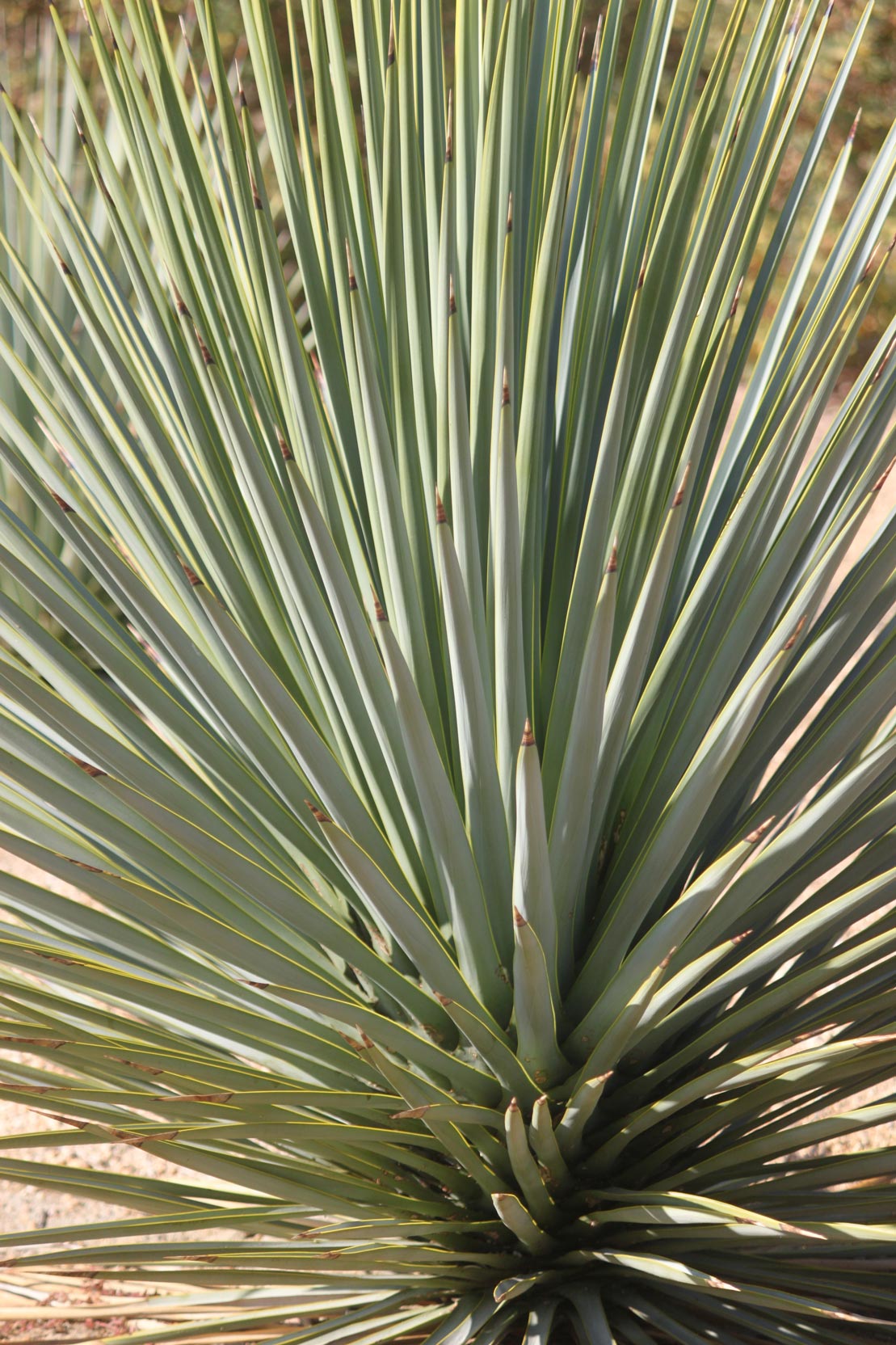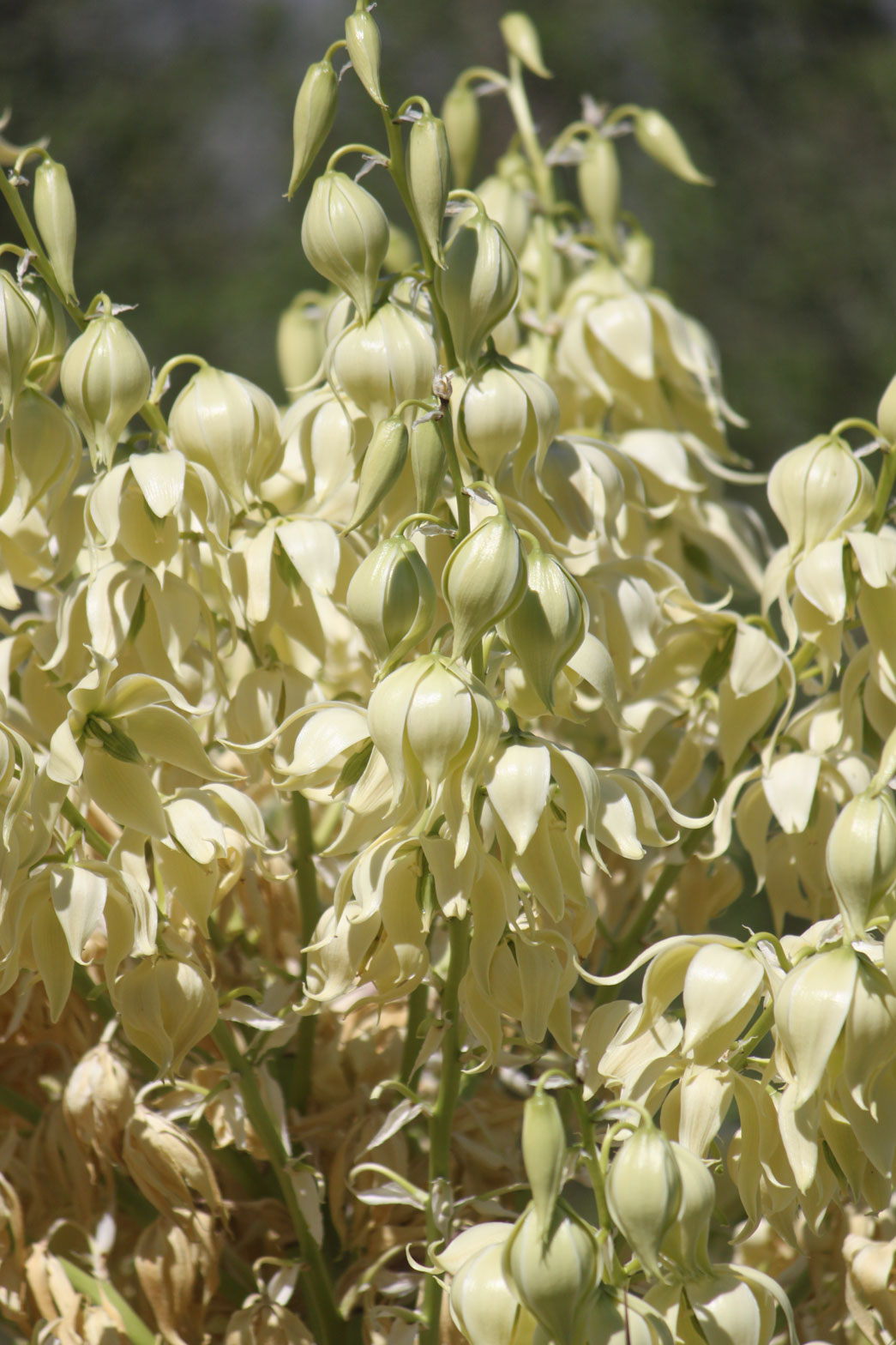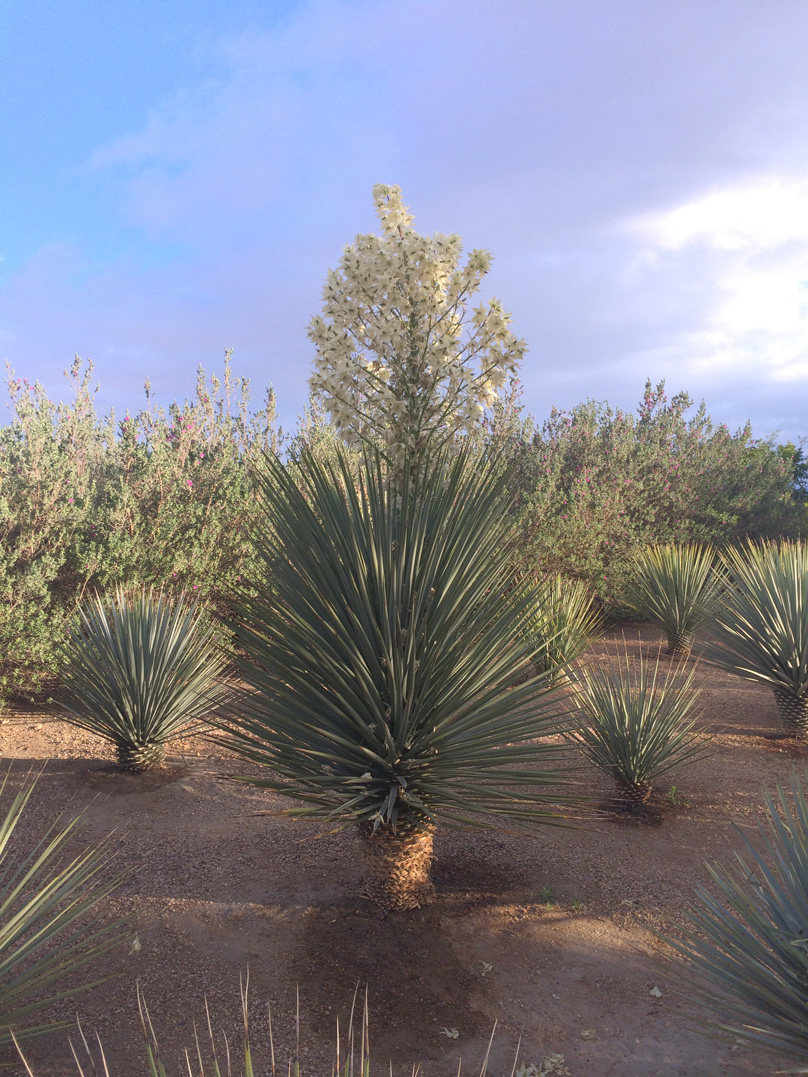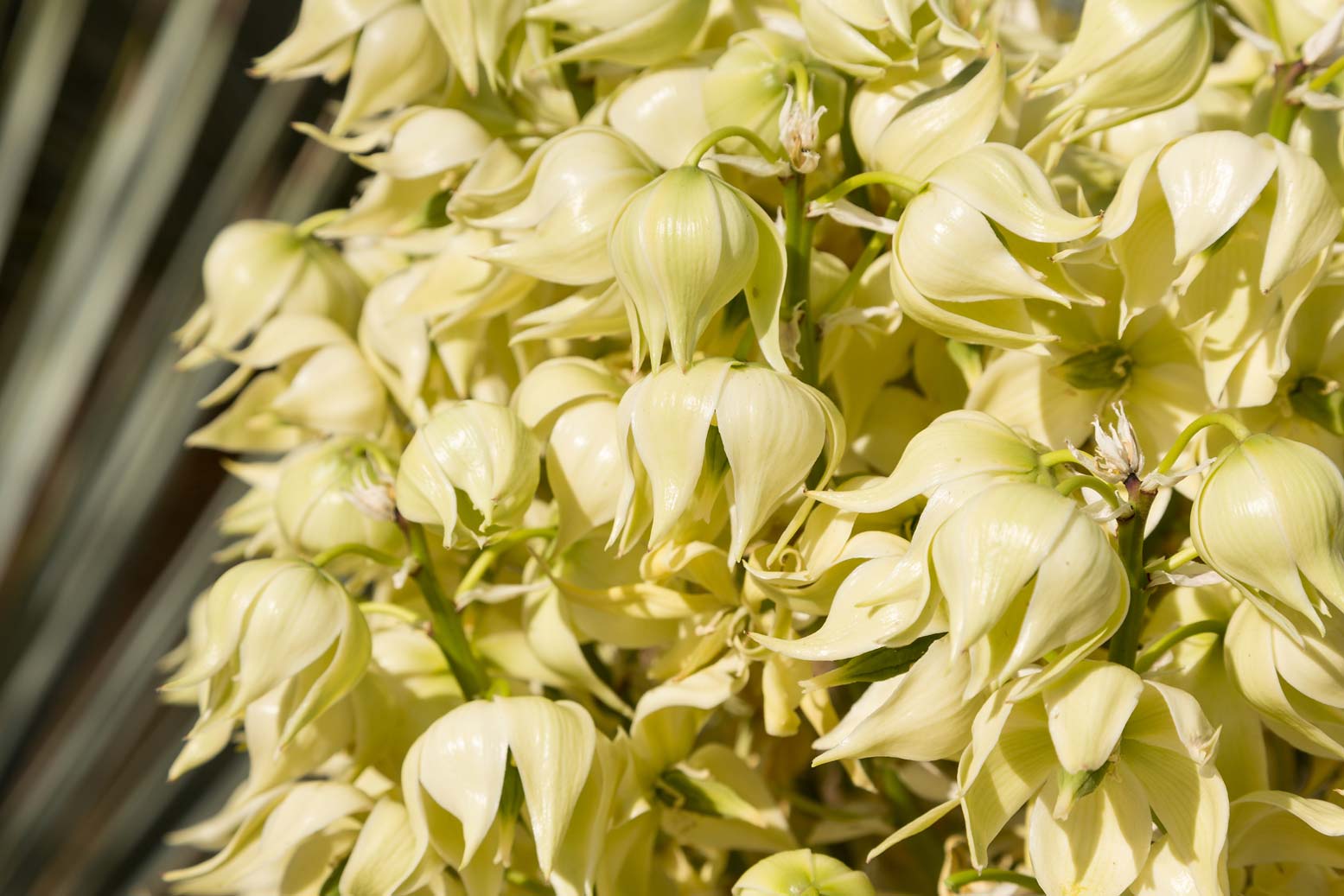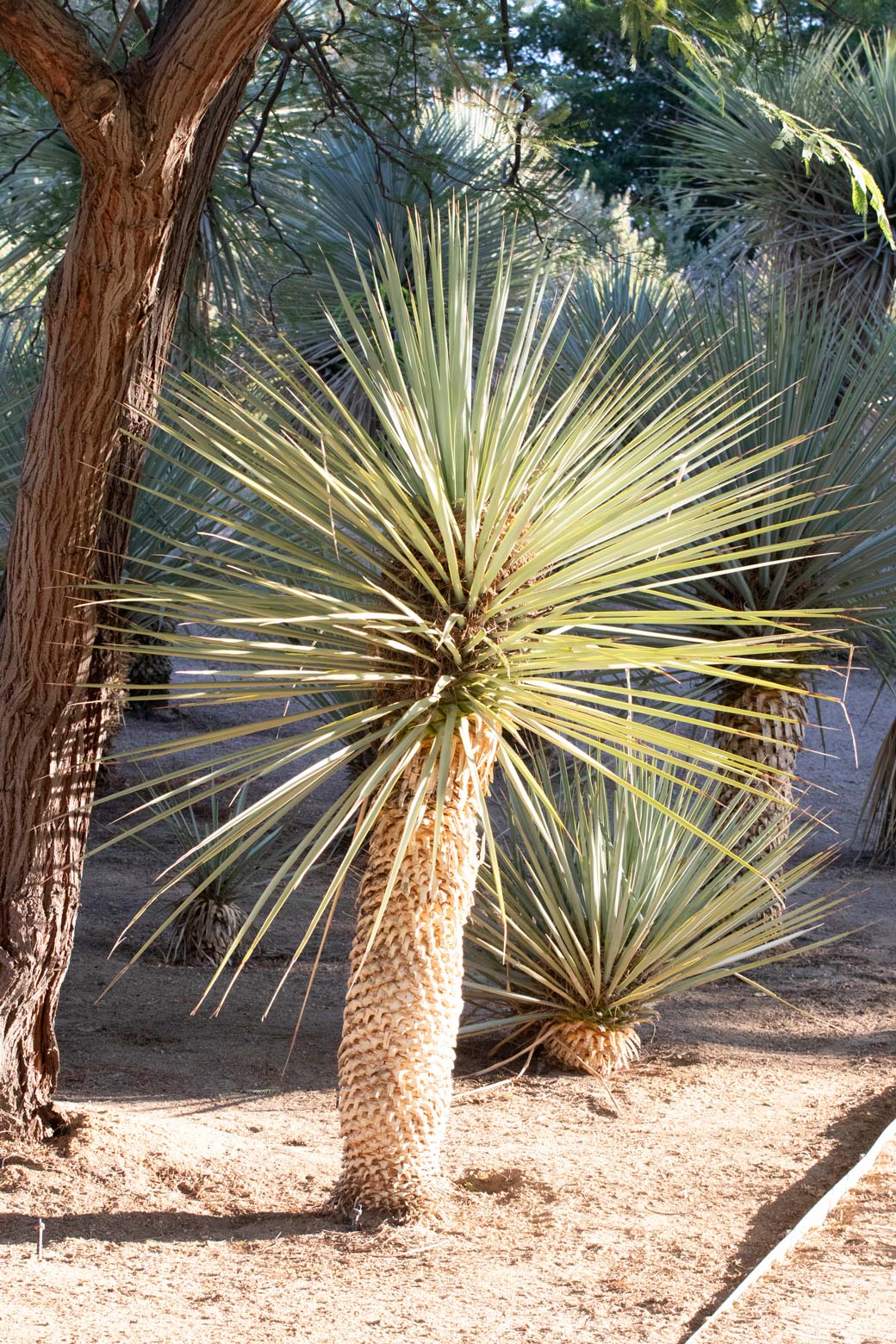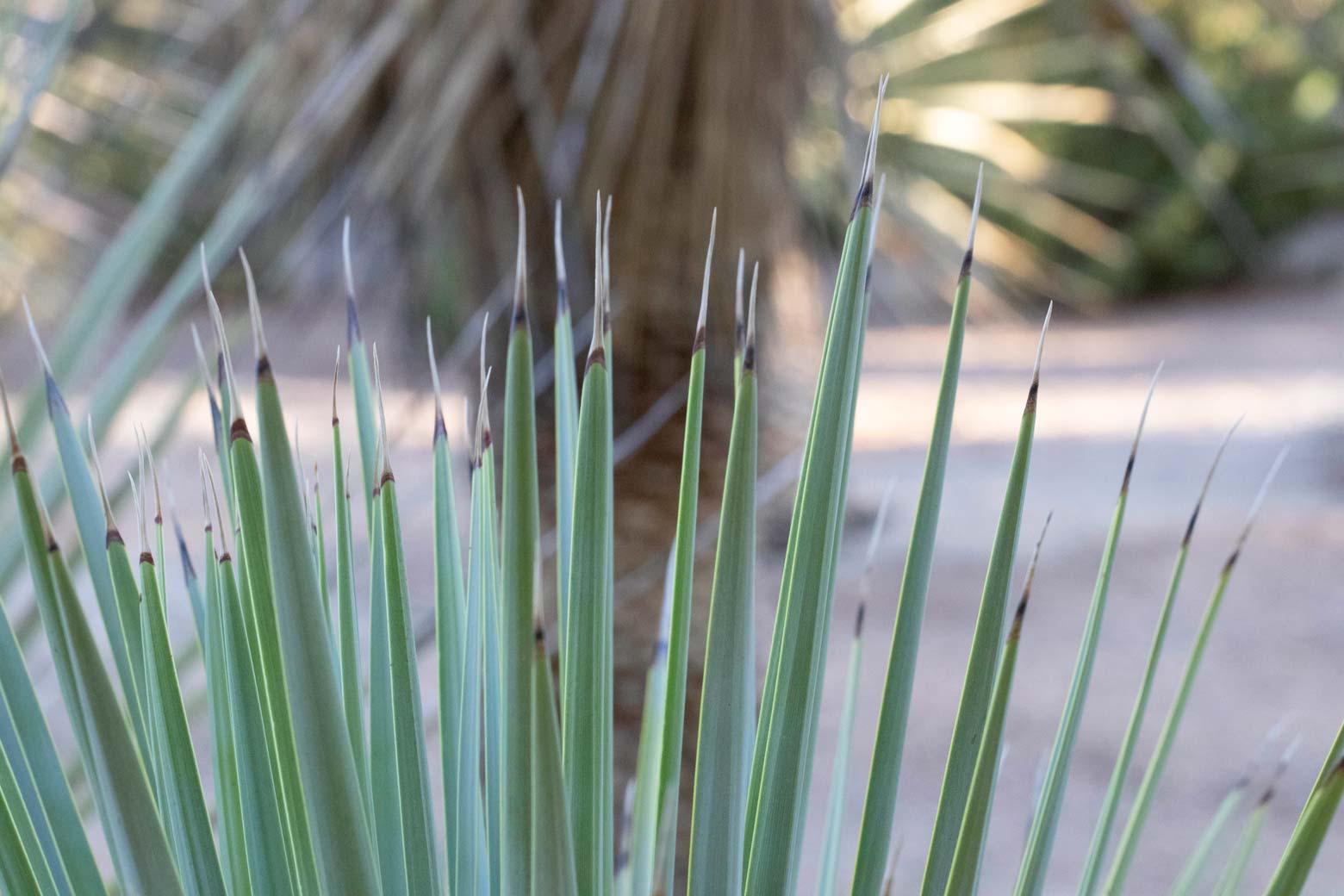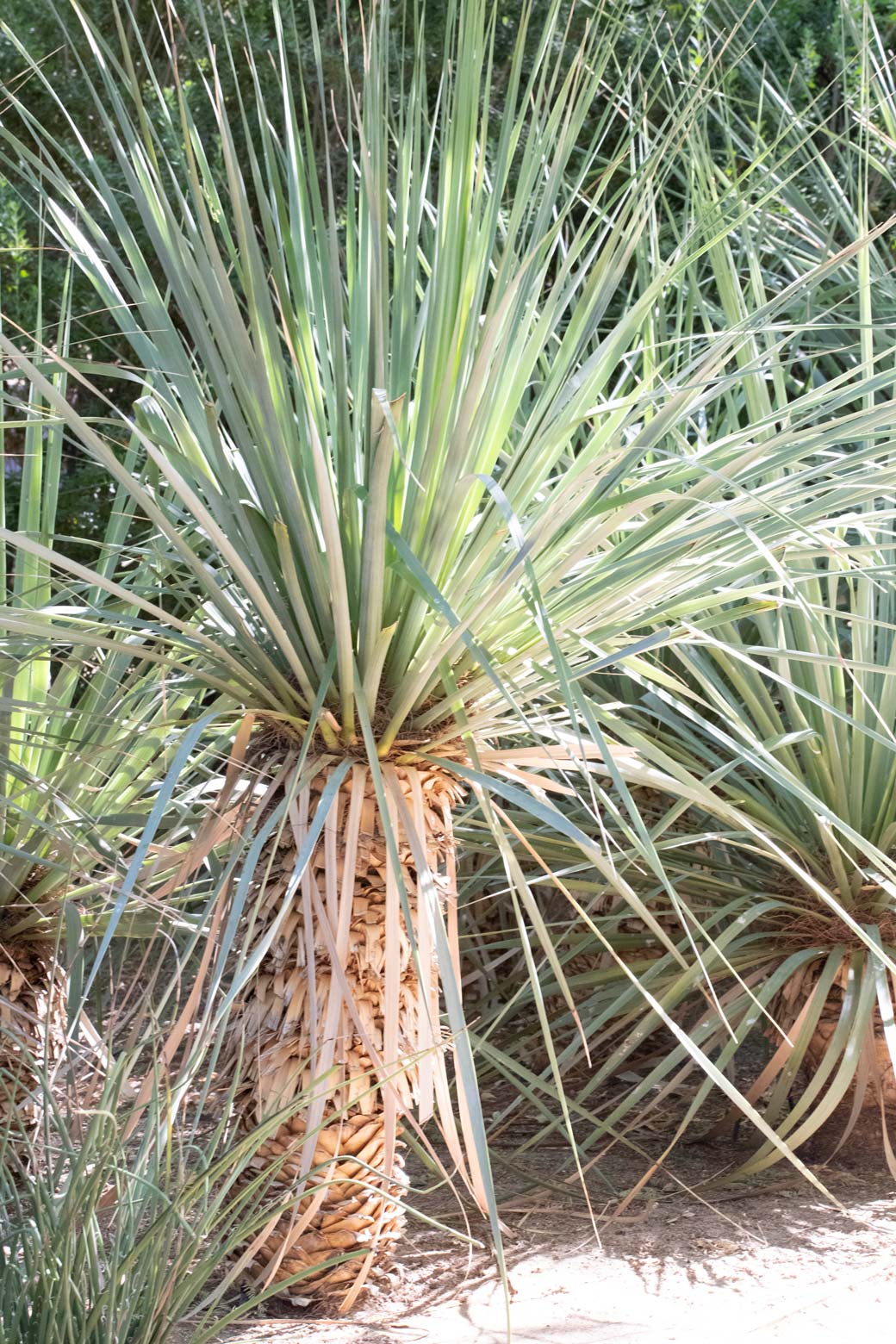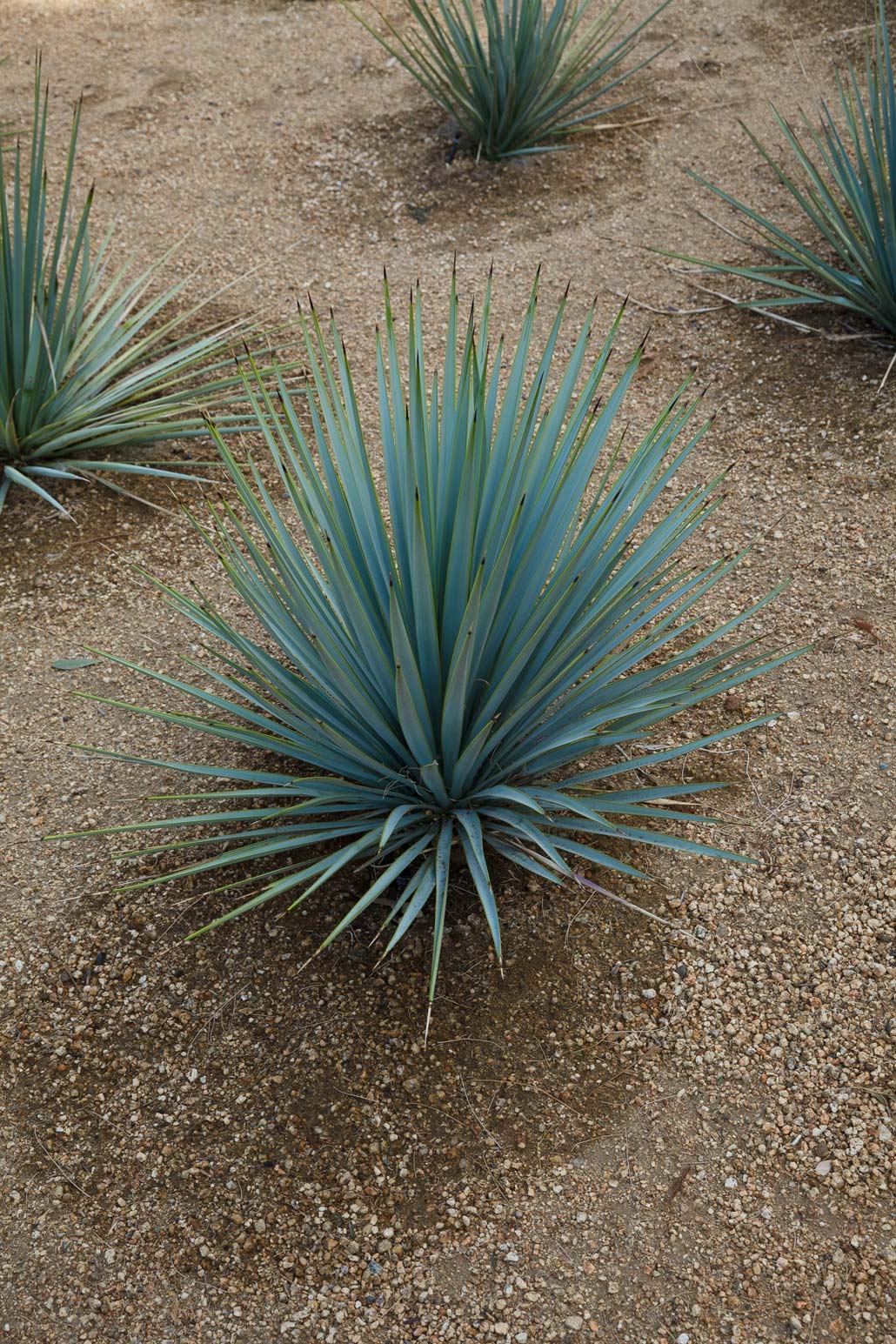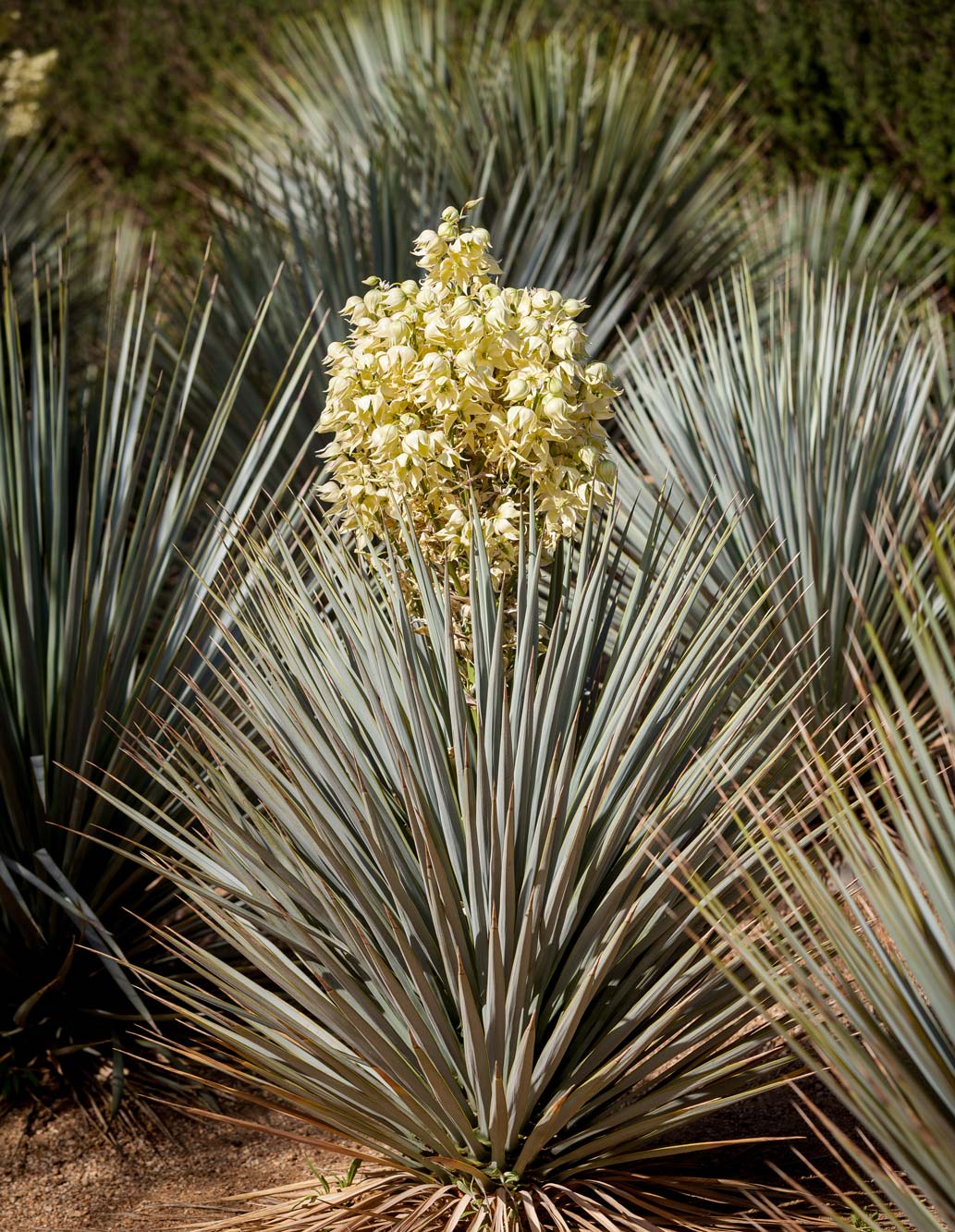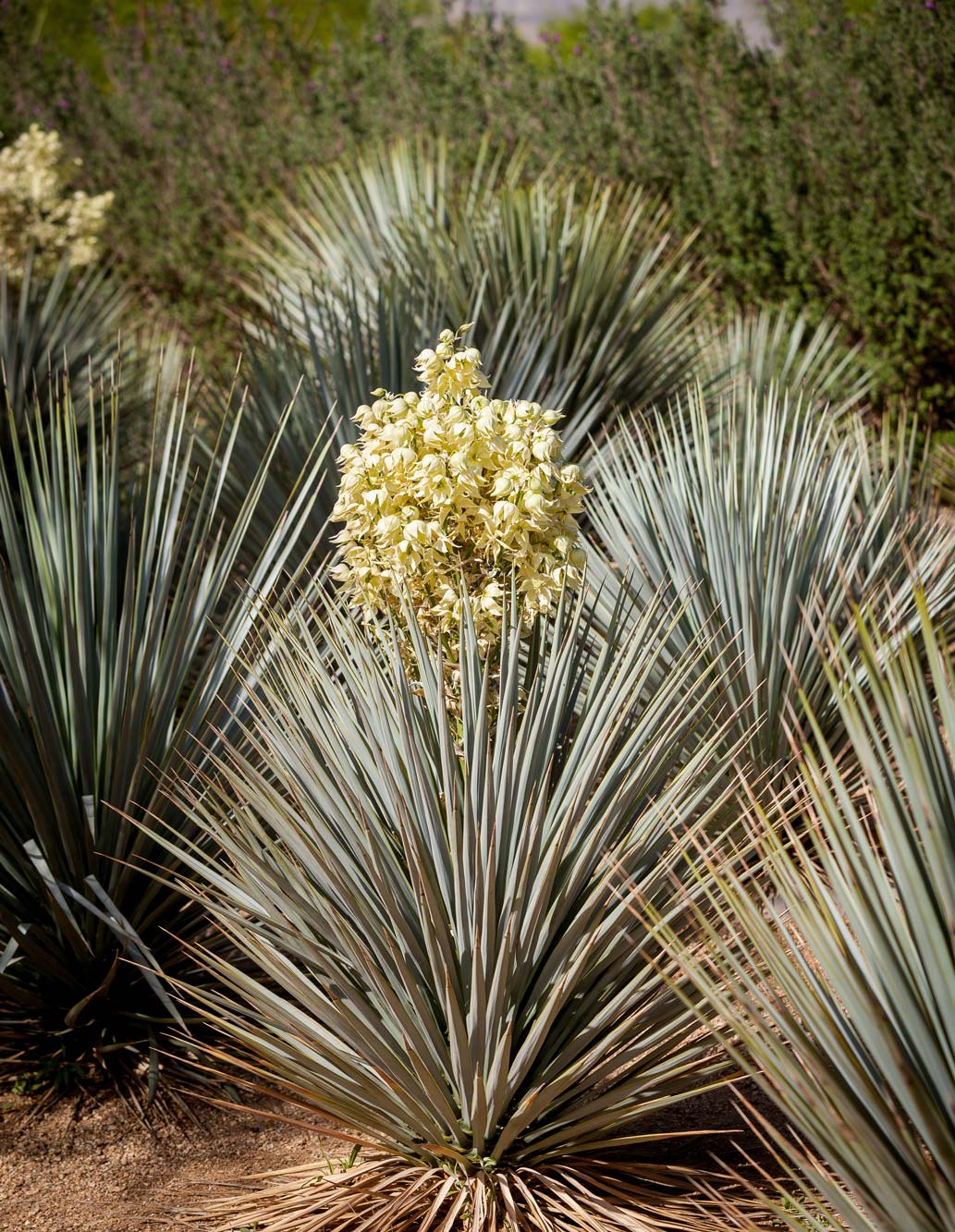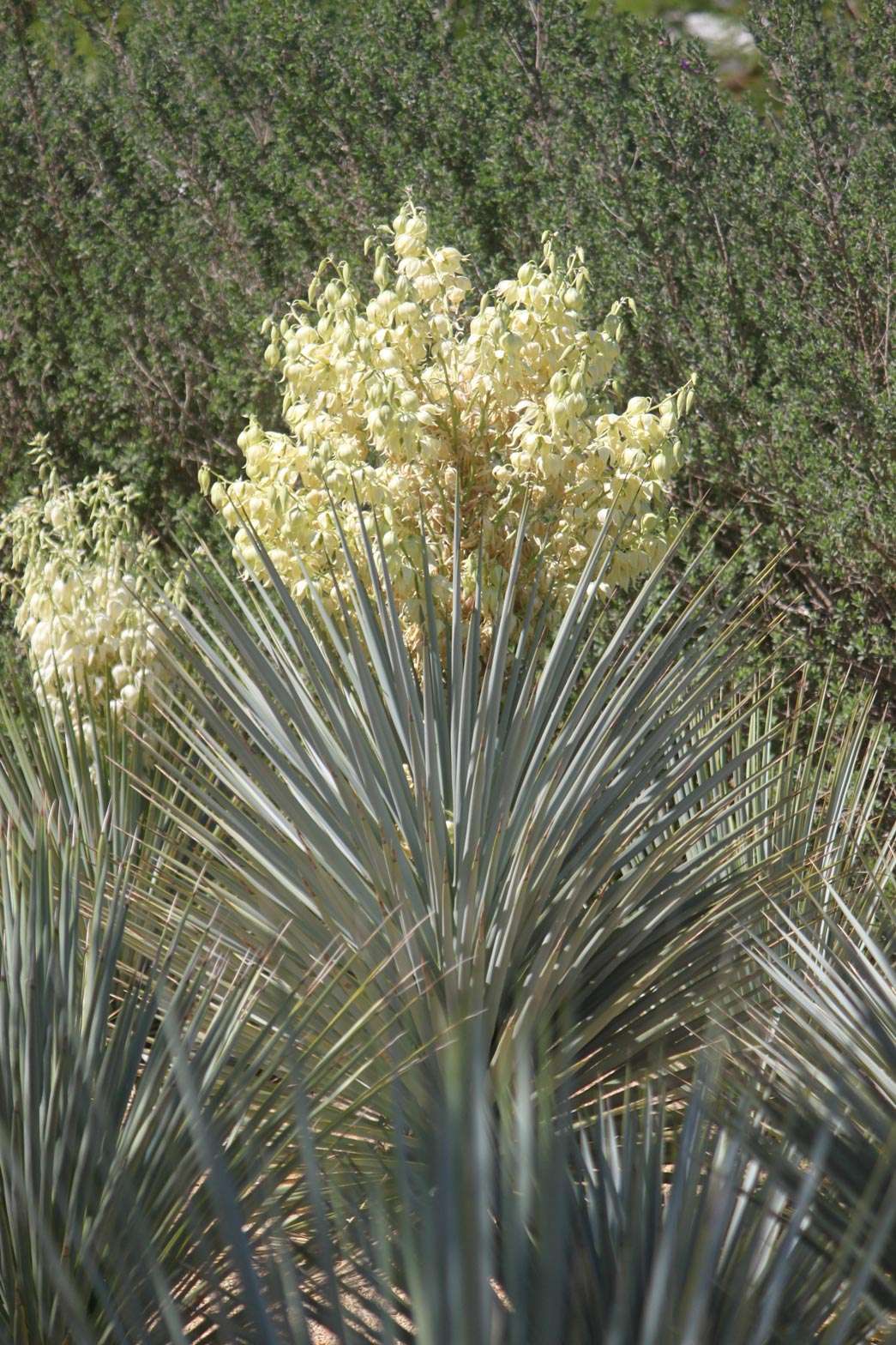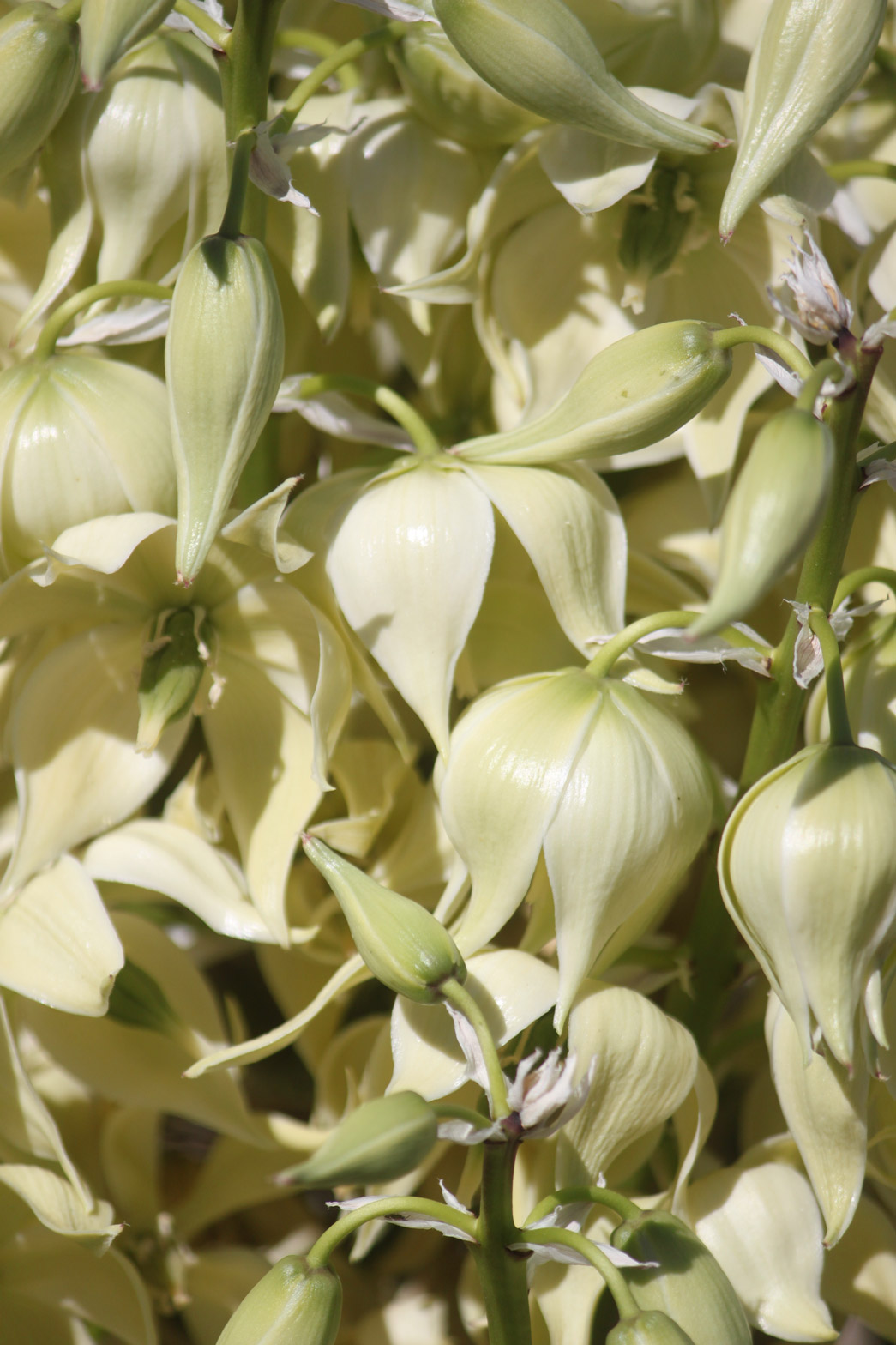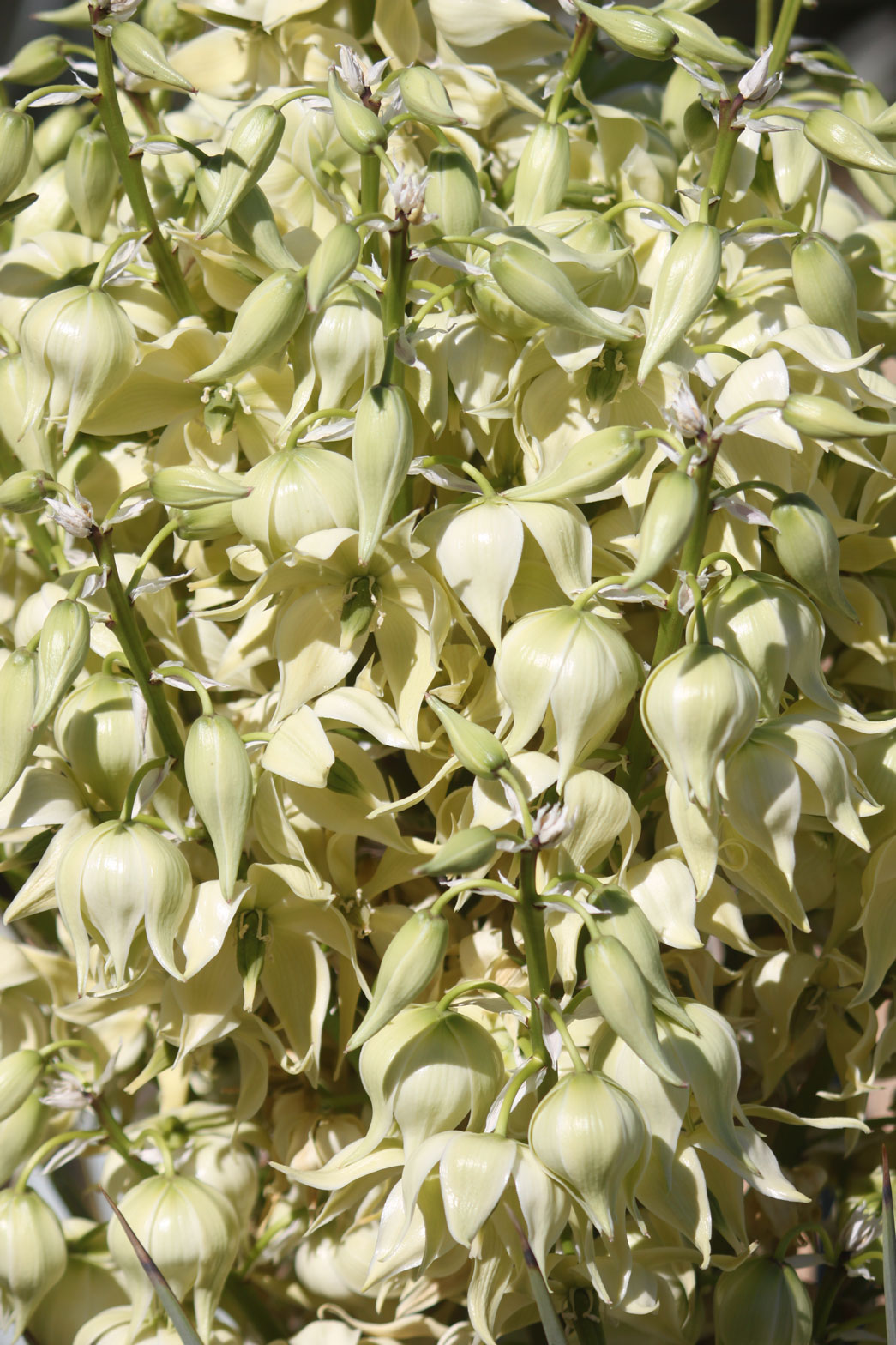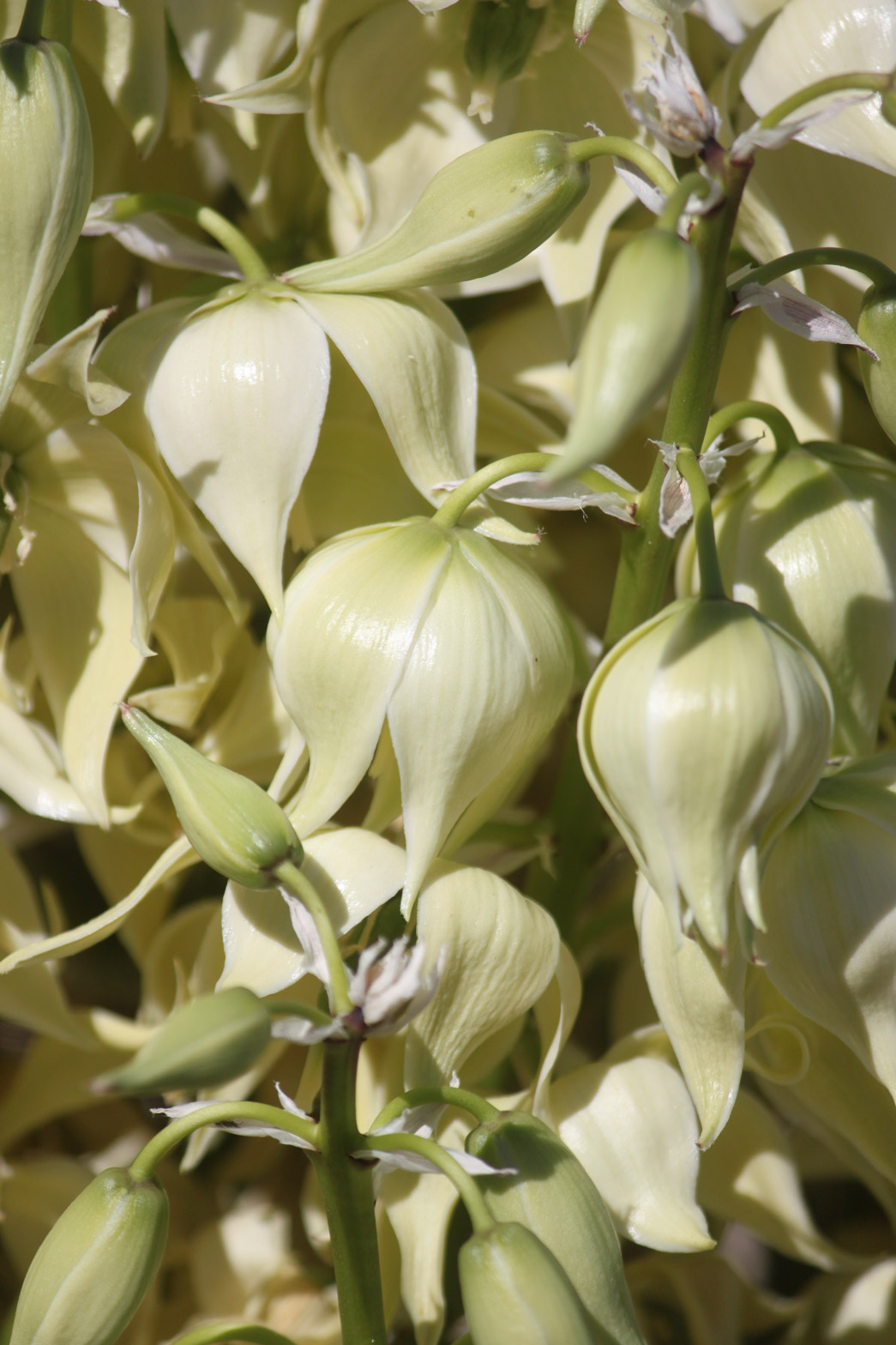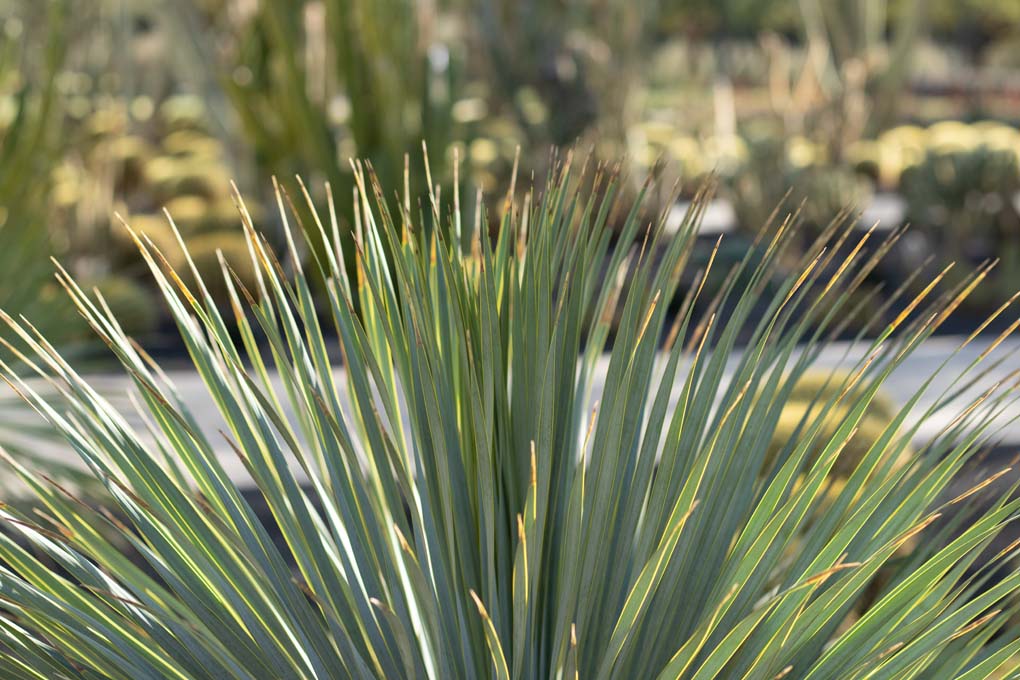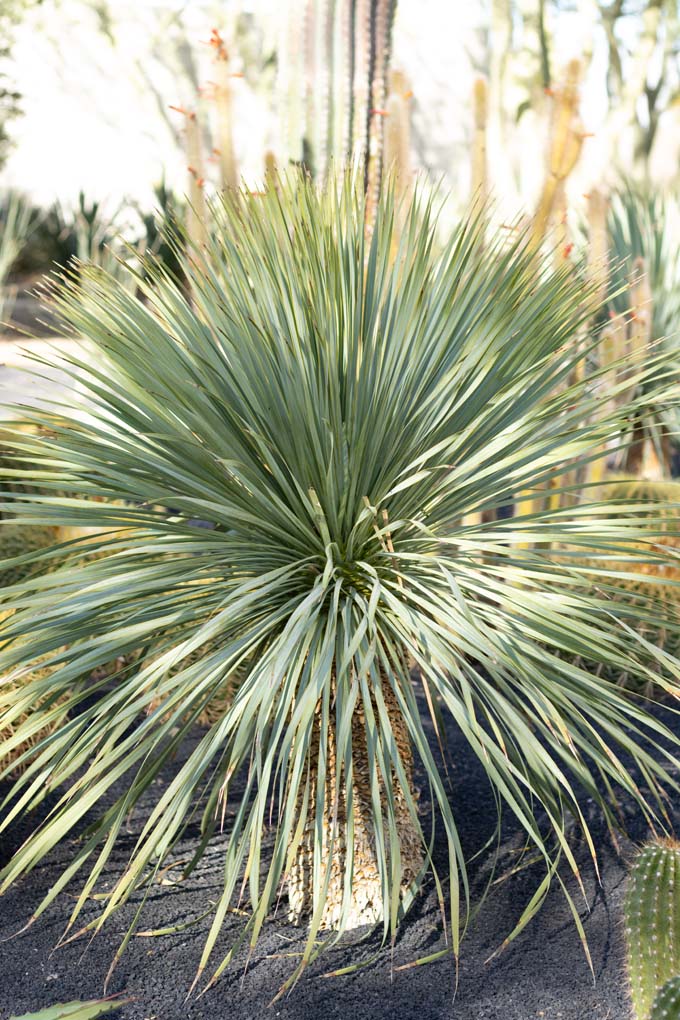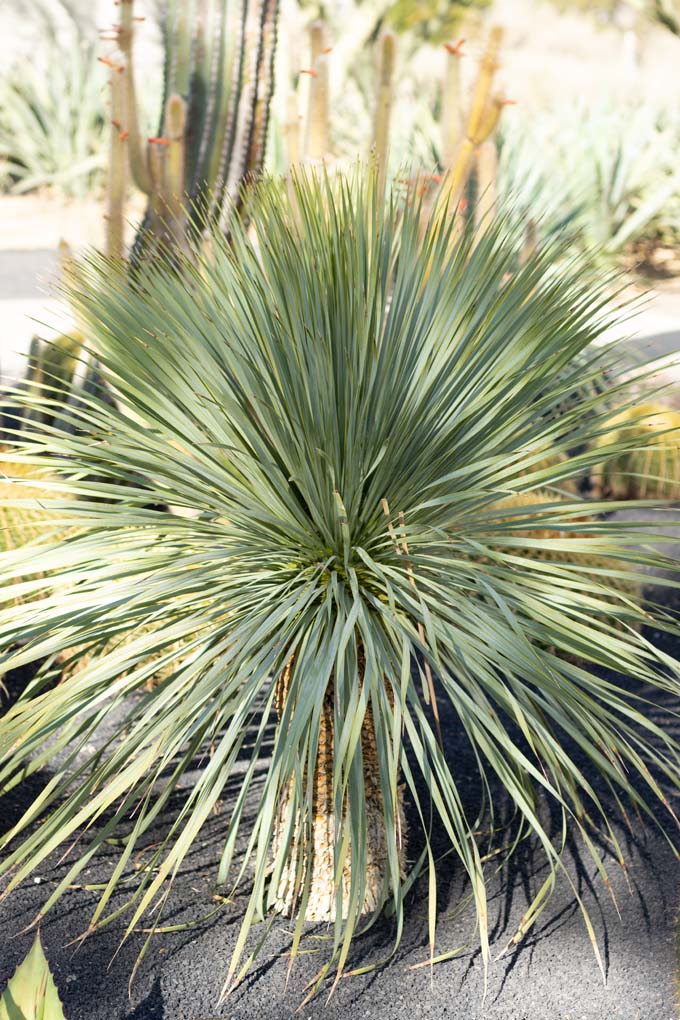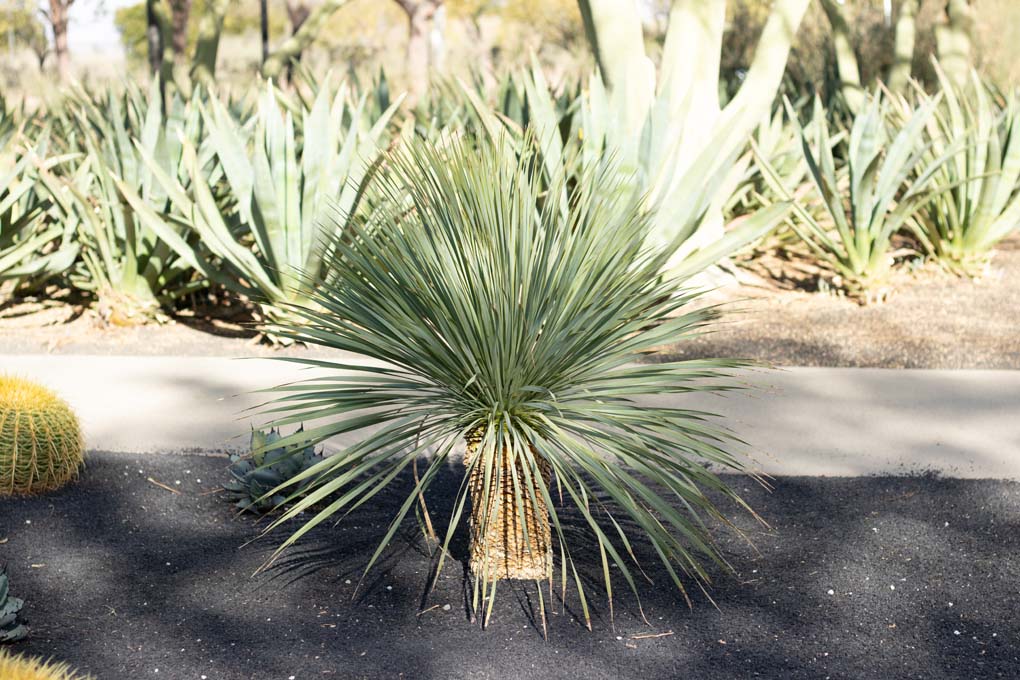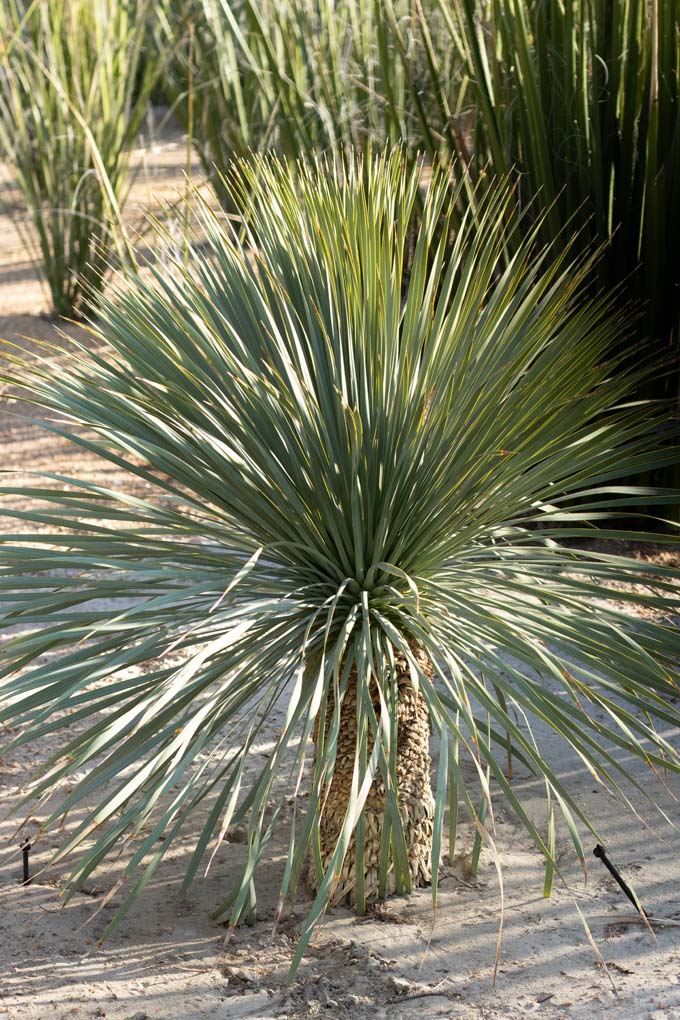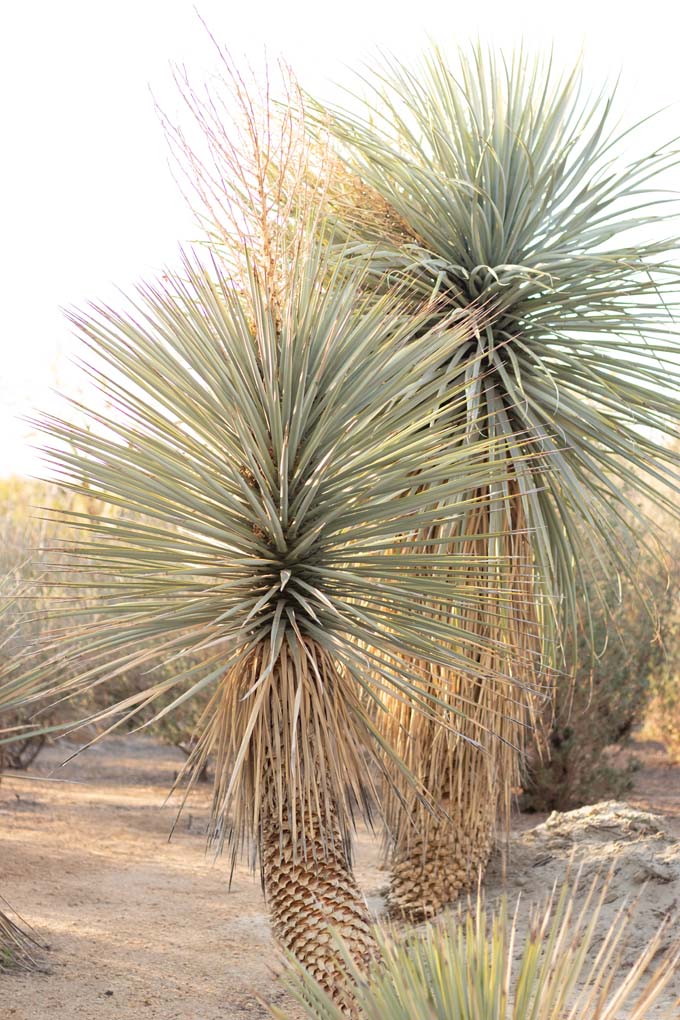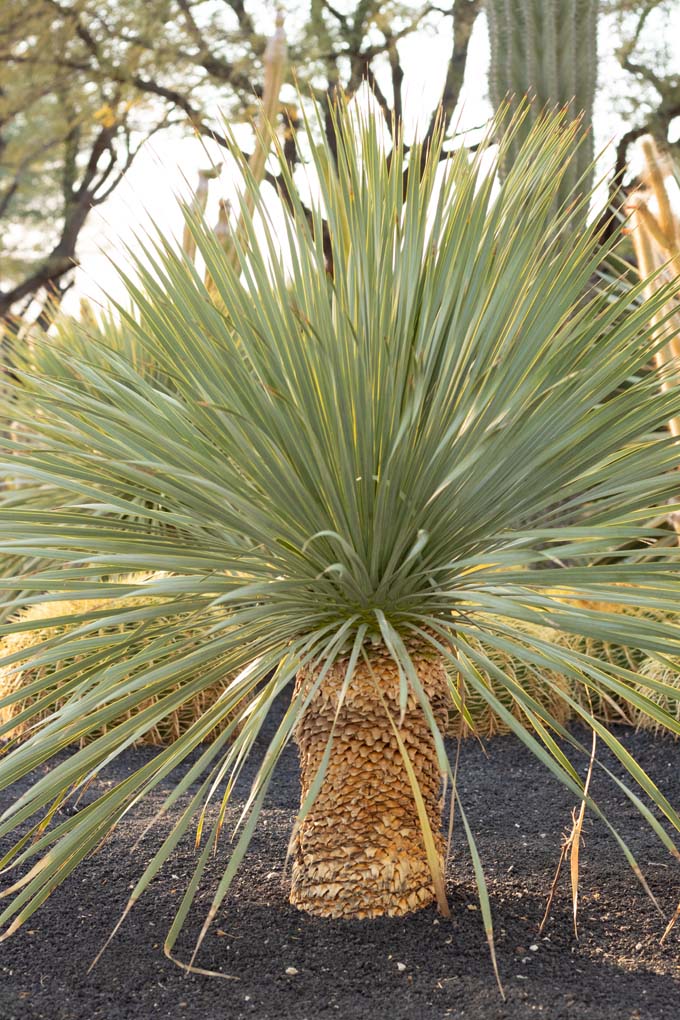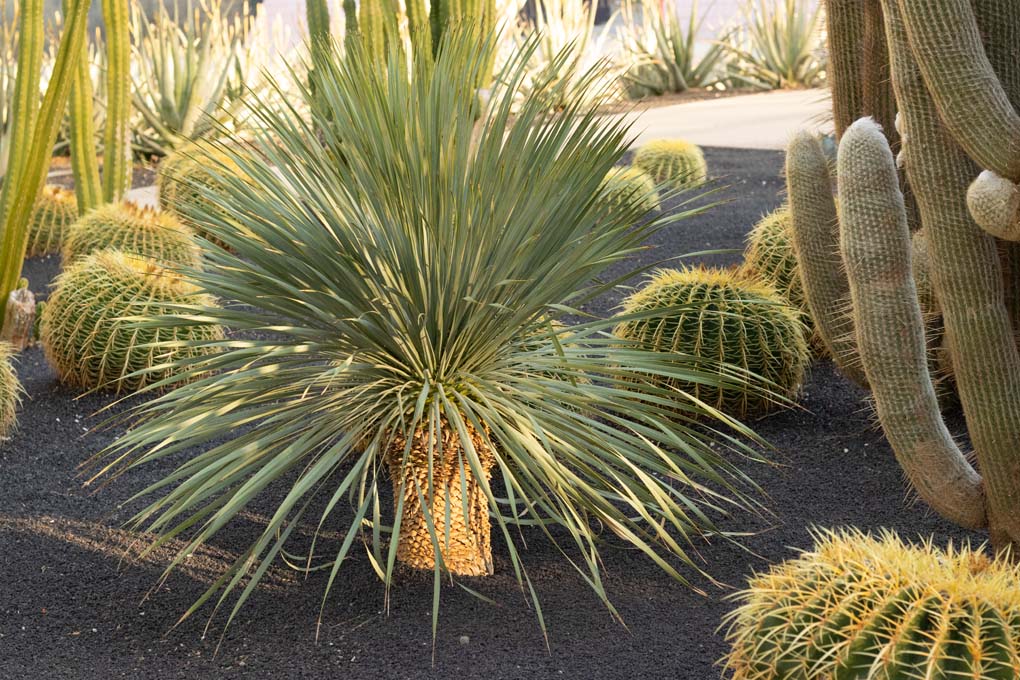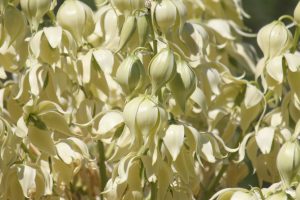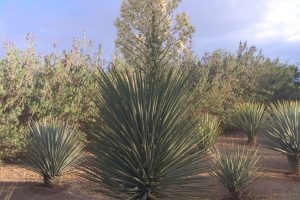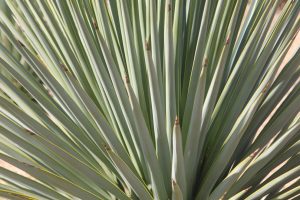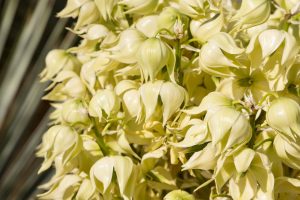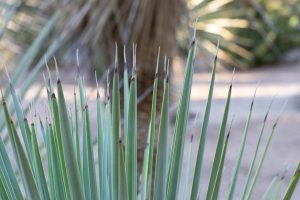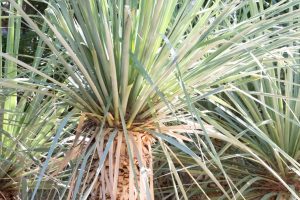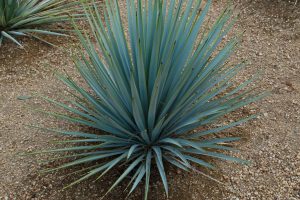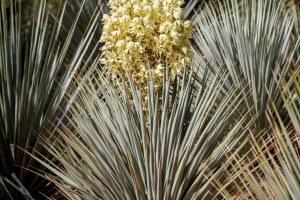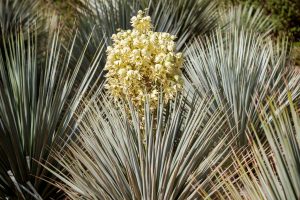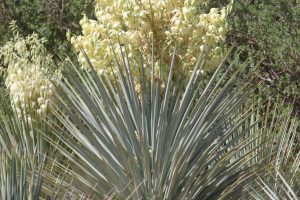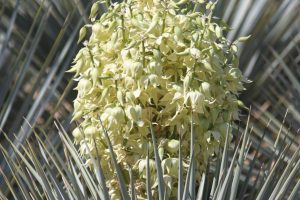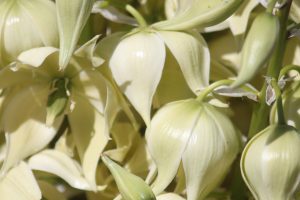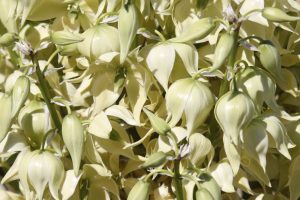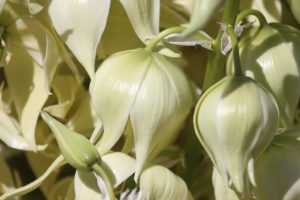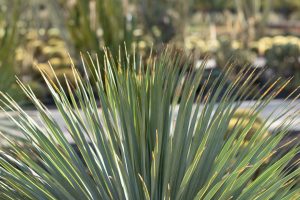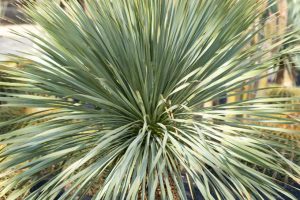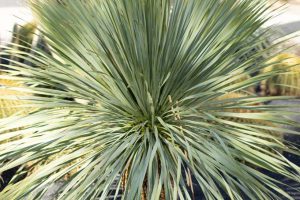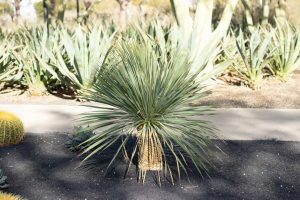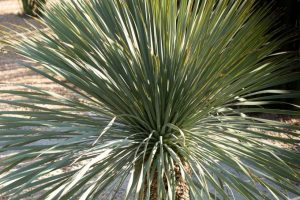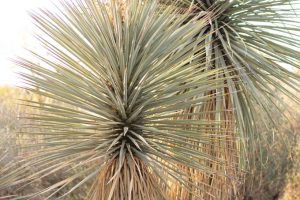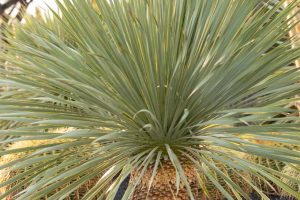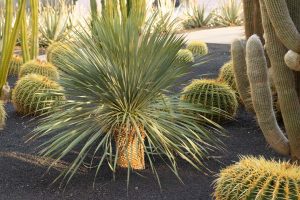Beaked Yucca is most obvious in the wildflower field. Entering from the path that starts in the middle of the parking lot and taking the route to the left, it lies immediately ahead on the left side of the path. When it was originally planted at ground level, it appeared like rigid bunch grass. In recent seasons, it began to be more obvious as a trunking species that will rise up between 6 and 15 feet. As each new row of leaves dies, it falls downward to create a skirt effect on the trunk. It can grow single or multi-headed branches. Its leaves are mostly rigid and may or may not have a slight curve.
Rostrata, like other yuccas, is truly in its glory when it blooms. Its large candelabras of pure white blooms signals that it is another species attractive to nocturnal pollinators, which is common in the desert. The main pollinator of yuccas is the Yucca Moth. They have a special symbiotic relationship with this genus and, although other pollinators may visit, the Yucca Moth is the real partner. The plant’s fruit is shaped with a point like a beak, which is why it is nicknamed Beaked Yucca.
The distribution of Beaked Yucca is in the states of Chihuahua and Coahuila in northern Mexico, and western Texas in the United States.
